Is there a market more saturated than headphones? We don’t know for sure, but we do know that there are a lot of options out there for someone looking to enjoy their music, audiobooks or podcasts on the go. When we rate headphones, we tend to focus on wireless headphones and true wireless in particular — yes, Apple’s AirPods have been insanely popular over the past several years. But this list of best headphones also includes on-ear models, over-ear headphones and even some inexpensive headphones as “budget” standouts for people who don’t want to drop a ton of cash to get optimal comfort and great sound.
These are our current favorites for the “best headphones” designation (with waterproofing ratings included for earbuds). Note that we’re still seeing plenty of new models arrive, many of which we noted in our best headphones of CES 2022 roundup. We’ll update this list regularly as we test out those new models.
Read more: Best true wireless earbuds of 2022

 \n ","topic":"","ttag":"","variant":"","viewguid":"","event":"listicle|image|1","correlationId":"","_destCat":"https:\/\/www.amazon.com\/dp\/B094C4VDJZ\/","productName":"Sony WF-1000XM4 (Black)","formatType":"IMAGE","location":"LIST","position":1,"sku":"WF1000XM4\/B","dwLinkTag":"article-body|listicle|image","selector":"#article-body #listicle-e2efec22-d0c1-49a0-8ee7-557ac1a6b693 .itemImage"}}” rel=”noopener nofollow” target=”_blank”>
\n ","topic":"","ttag":"","variant":"","viewguid":"","event":"listicle|image|1","correlationId":"","_destCat":"https:\/\/www.amazon.com\/dp\/B094C4VDJZ\/","productName":"Sony WF-1000XM4 (Black)","formatType":"IMAGE","location":"LIST","position":1,"sku":"WF1000XM4\/B","dwLinkTag":"article-body|listicle|image","selector":"#article-body #listicle-e2efec22-d0c1-49a0-8ee7-557ac1a6b693 .itemImage"}}” rel=”noopener nofollow” target=”_blank”>
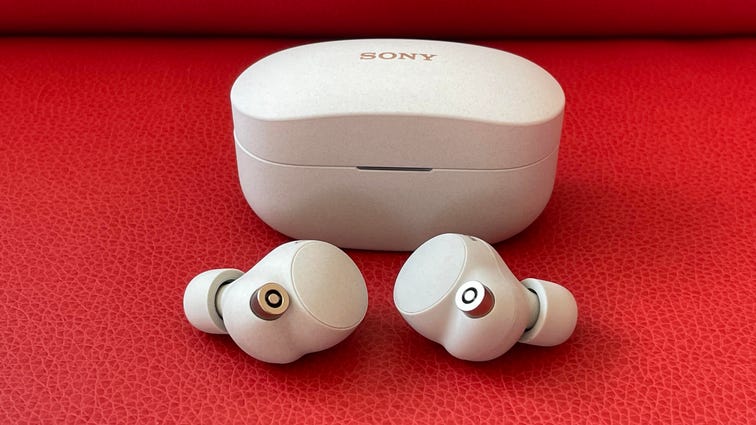

David Carnoy/CNET
No earbuds are perfect, of course, and not everybody will love the fit of the Sony WF-1000XM4 buds or be able to afford their high price. But if you’re looking for great-sounding earbuds with great noise canceling, solid voice-calling capabilities and good battery life, these buds check all the boxes. Read our Sony WF-1000XM4 review.
(Watch this: Beats Fit Pro are the sports AirPods you’ve always wanted).

 \n ","topic":"","ttag":"","variant":"","viewguid":"","event":"listicle|image|2","correlationId":"","_destCat":"https:\/\/www.amazon.com\/Beats-Fit-Pro-Cancelling-Built\/dp\/B09JL41N9C","productName":"","formatType":"IMAGE","location":"LIST","position":2,"sku":"","dwLinkTag":"article-body|listicle|image","selector":"#article-body #listicle-15e1b7f7-44e4-47ba-a48c-3e801f0af4ae .itemImage"}}” rel=”noopener nofollow” target=”_blank”>
\n ","topic":"","ttag":"","variant":"","viewguid":"","event":"listicle|image|2","correlationId":"","_destCat":"https:\/\/www.amazon.com\/Beats-Fit-Pro-Cancelling-Built\/dp\/B09JL41N9C","productName":"","formatType":"IMAGE","location":"LIST","position":2,"sku":"","dwLinkTag":"article-body|listicle|image","selector":"#article-body #listicle-15e1b7f7-44e4-47ba-a48c-3e801f0af4ae .itemImage"}}” rel=”noopener nofollow” target=”_blank”>
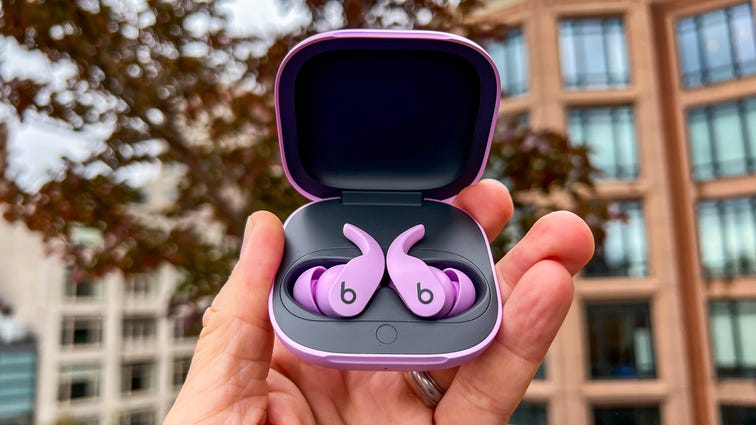

David Carnoy/CNET
Hot on the heels of the third-generation AirPods, Apple has another new set of earbuds, this time from its subsidiary audio company, Beats. Technically, the new Beats Fit Pro ($200) aren’t AirPods, but they’re built on the same tech platform as the AirPods Pro. Unlike Beats’ earlier and less expensive Studio Buds, the Beats Fit Pro include Apple’s H1 chip and have most of the AirPods Pro’s features, including active noise canceling, spatial audio, Adaptive EQ and IPX4 water-resistance (splash-proof). I’d venture to call them the sports AirPods you’ve always wanted. And for some people, they might just be better than the AirPods Pro. Read our Beats Fit Pro review.

 \n ","topic":"","ttag":"","variant":"","viewguid":"","event":"listicle|image|3","correlationId":"","_destCat":"https:\/\/www.amazon.com\/dp\/B08H8GNPLQ","productName":"Bowers & Wilkins PI7","formatType":"IMAGE","location":"LIST","position":3,"sku":"FP42420","dwLinkTag":"article-body|listicle|image","selector":"#article-body #listicle-9d8e9c3e-217e-4849-883b-7519642a93df .itemImage"}}” rel=”noopener nofollow” target=”_blank”>
\n ","topic":"","ttag":"","variant":"","viewguid":"","event":"listicle|image|3","correlationId":"","_destCat":"https:\/\/www.amazon.com\/dp\/B08H8GNPLQ","productName":"Bowers & Wilkins PI7","formatType":"IMAGE","location":"LIST","position":3,"sku":"FP42420","dwLinkTag":"article-body|listicle|image","selector":"#article-body #listicle-9d8e9c3e-217e-4849-883b-7519642a93df .itemImage"}}” rel=”noopener nofollow” target=”_blank”>
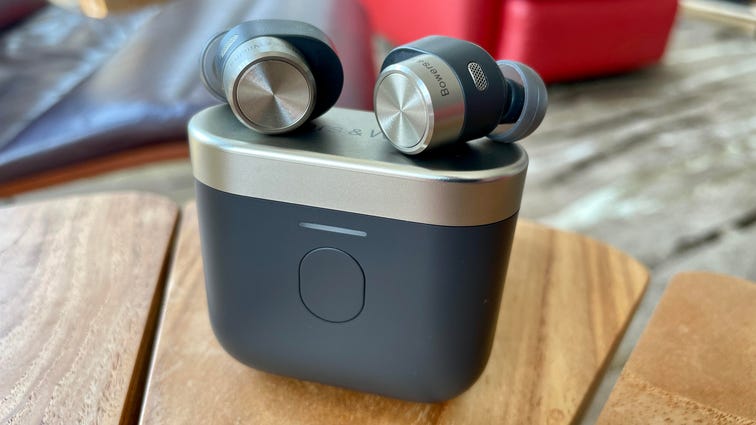

David Carnoy/CNET
After a long wait, Bowers & Wilkins has finally released a couple of sets of true wireless earbuds — the PI7 ($400) and PI5 ($250) — both of which are excellent and feature active noise canceling along with a transparency mode. The flagship PI7 has a different driver design and sounds slightly more detailed and refined with a little more bass energy. They both sound excellent, but if you’re looking for the absolute best-sounding set of earbuds, the PI7 are arguably just that, besting the Sony WF-1000XM4 by a small margin. (They also sound slightly better than the excellent Sennheiser Momentum True Wireless II and Master & Dynamic MW08.)
While the PI7’s noise canceling is quite decent, the Sony’s noise canceling is superior. I also thought the Sony did better with voice calling (it has better noise reduction so people can hear you better in a noisier environments) and it has better battery life.
The PI7’s case does transform into a Bluetooth transceiver, so you can plug it into your laptop for aptX streaming or an in-flight entertainment system. That’s a nice bonus feature (the PI5 don’t have it), but the Sony is the overall better value. However, if sound quality is your priority, the PI7 are worth considering if you can afford them. Hopefully they come down in price over time.
The PI5 buds also sound excellent and are a touch lighter than the PI7. At $250, the PI5 competes directly with the $280 Sony 1000XM4. As with all in-ear headphones, you have to try them to see how they fit your ears. Bowers & Wilkins’ buds may fit your ears better than Sony’s and vice versa. Read our Bowers & Wilkins PI7 first take.
Note that despite their high price, the PI7 buds have been in and out of stock at various retailers.

 \n ","topic":"Headphones","ttag":"amazon","variant":"","viewguid":"","event":"listicle|image|4","correlationId":"","assettitle":"","campaign":"amazon","cval":36,"leadCpc":0.36,"leadProdPrice":348,"manufacturer":"Sony","productName":"Sony WH-1000XM4 (Black)","seriesGuid":"87122b54-0127-43e7-8360-ec564351e1ce","sku":"WH1000XM4\/B","reviewId":"3fdb2fe9-8590-4b2c-985b-3ae865211bb5","formatType":"IMAGE","location":"LIST","position":4,"dwLinkTag":"article-body|listicle|image","selector":"#article-body #listicle-99379cae-142f-4e9c-876c-181e35f8396e .itemImage"}}” rel=”noopener nofollow” target=”_blank”>
\n ","topic":"Headphones","ttag":"amazon","variant":"","viewguid":"","event":"listicle|image|4","correlationId":"","assettitle":"","campaign":"amazon","cval":36,"leadCpc":0.36,"leadProdPrice":348,"manufacturer":"Sony","productName":"Sony WH-1000XM4 (Black)","seriesGuid":"87122b54-0127-43e7-8360-ec564351e1ce","sku":"WH1000XM4\/B","reviewId":"3fdb2fe9-8590-4b2c-985b-3ae865211bb5","formatType":"IMAGE","location":"LIST","position":4,"dwLinkTag":"article-body|listicle|image","selector":"#article-body #listicle-99379cae-142f-4e9c-876c-181e35f8396e .itemImage"}}” rel=”noopener nofollow” target=”_blank”>


David Carnoy/CNET
Sony’s earlier WH-1000XM3 model was great. But if it had a weakness, that was voice calling, particularly in noisier environments. The WH-1000XM4 model has improved in that area and also adds multipoint Bluetooth pairing so you can connect to two devices — such as your phone and PC — at the same time. That means that if a call comes in while you’re using the headphones with your computer, the audio will switch to your phone when you answer the call.
The Bose Noise Cancelling Headphones 700 probably still have a slight edge for voice calls, but the 1000XM4 headphones are arguably a tad more comfortable and also have some other slight improvements to noise cancellation and sound that make this model a great all-around choice. Even better: This model gets regularly discounted.

 \n ","topic":"","ttag":"","variant":"","viewguid":"","event":"listicle|image|5","correlationId":"","_destCat":"https:\/\/www.amazon.com\/Bose-QuietComfort-Bluetooth-Cancelling-Headphones\/dp\/B098FKXT8L?th=1","productName":"Bose QuietComfort 45 – headphones with mic","formatType":"IMAGE","location":"LIST","position":5,"sku":"866724-0100","dwLinkTag":"article-body|listicle|image","selector":"#article-body #listicle-72f92ba8-abc9-4f6d-ae9c-7f0b7a4e9806 .itemImage"}}” rel=”noopener nofollow” target=”_blank”>
\n ","topic":"","ttag":"","variant":"","viewguid":"","event":"listicle|image|5","correlationId":"","_destCat":"https:\/\/www.amazon.com\/Bose-QuietComfort-Bluetooth-Cancelling-Headphones\/dp\/B098FKXT8L?th=1","productName":"Bose QuietComfort 45 – headphones with mic","formatType":"IMAGE","location":"LIST","position":5,"sku":"866724-0100","dwLinkTag":"article-body|listicle|image","selector":"#article-body #listicle-72f92ba8-abc9-4f6d-ae9c-7f0b7a4e9806 .itemImage"}}” rel=”noopener nofollow” target=”_blank”>
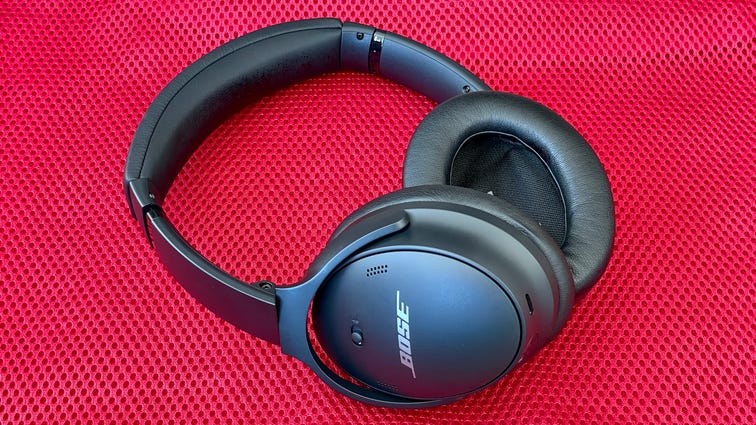

David Carnoy/CNET
The Bose QuietComfort 45 essentially looks the same as its popular predecessor, the QuietComfort 35 II, with the biggest design difference being a USB-C port in place of the older Micro-USB. (At 238 grams, the QC45 weighs just 3 grams more than the QC35, which should be imperceptible.) And while the Bose 700 have plenty of fans, a lot of people (including me think this QuietComfort design is slightly more comfortable and the headphones fold up and fold flat. It’s arguably the most comfortable pair of headphones out there.
They also sound very similar to the QC 35 II, with no change to the drivers. Where you’ll see an improvement is with the noise cancellation (there’s a transparency mode), which very well could be the best out right now. According to Bose, there’s a new electronics package that powers the new ANC system, which now better muffles “unwanted sounds in the midrange frequencies” (voices) that you’d “typically find on commuter trains, busy office spaces and cafes.”
I found that to be true and give these the slight edge over both the Headphones 700 and Sony WH-1000XM4 for noise canceling. That said, you can’t adjust the level of noise canceling like you can with those models, which offer a more robust feature set, particularly the Sony. You also can’t tweak the sound in the app; there’s no equalizer settings.
The headset performance has also improved, with better noise reduction during calls. And these offer multipoint Bluetooth pairing. That means you can pair the QC45 with two devices simultaneously — such as a smartphone and PC — and switch audio as needed. They’re equipped with Bluetooth 5.1 and support the widely compatible AAC audio codec but not AptX.
While these have advantages over the Headphones 700 and Sony WH-1000XM4 and do sound quite good, those models sound slightly better: The 700 is slightly more natural sounding and tuned more for audiophiles, while the Sony has more dynamic bass. So that makes choosing between these three models that much more difficult. Read our Bose QuietComfort 45 review.

 \n ","topic":"","ttag":"","variant":"","viewguid":"","event":"listicle|image|6","correlationId":"","_destCat":"https:\/\/www.amazon.com\/Apple-MLWK3AM-A-New-AirPods-dp-B09JQMJHXY\/dp\/B09JQMJHXY\/ref=dp_ob_title_def","productName":"Apple AirPods Pro","formatType":"IMAGE","location":"LIST","position":6,"sku":"MWP22AM\/A","dwLinkTag":"article-body|listicle|image","selector":"#article-body #listicle-6a2cce01-0716-4626-8356-7504ba713d79 .itemImage"}}” rel=”noopener nofollow” target=”_blank”>
\n ","topic":"","ttag":"","variant":"","viewguid":"","event":"listicle|image|6","correlationId":"","_destCat":"https:\/\/www.amazon.com\/Apple-MLWK3AM-A-New-AirPods-dp-B09JQMJHXY\/dp\/B09JQMJHXY\/ref=dp_ob_title_def","productName":"Apple AirPods Pro","formatType":"IMAGE","location":"LIST","position":6,"sku":"MWP22AM\/A","dwLinkTag":"article-body|listicle|image","selector":"#article-body #listicle-6a2cce01-0716-4626-8356-7504ba713d79 .itemImage"}}” rel=”noopener nofollow” target=”_blank”>
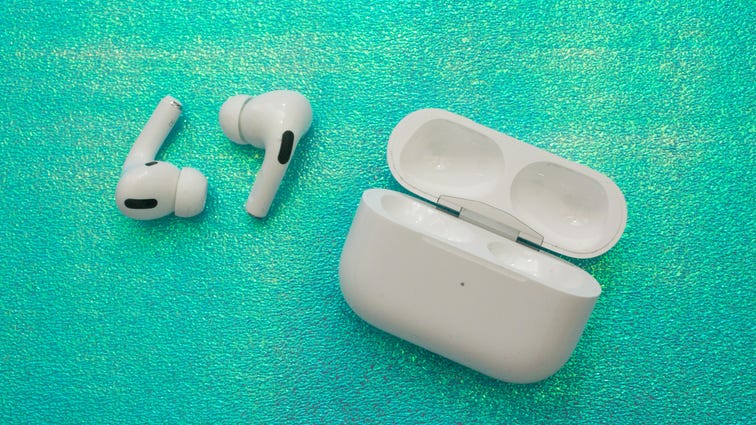

Sarah Tew/CNET
Even if they don’t sound quite as magical as you’d hope a $249 model would, the Apple AirPods Pro still manage to be a great pair of true wireless earphones with noise cancellation. That’s largely due to their winning design and fit, improved bass performance and effective noise canceling — and now these true wireless headphones have been updated with spatial audio, a new virtual-sound mode for watching movies and TV shows (only works with iPhones and iPads running iOS 14).
They’re an excellent choice when you want to make a call or listen to music during your workout. Yeah, they’re expensive at $250, but the good news is they tend to sell in the $180 to $200 range.

 \n ","topic":"Headphones","ttag":"direct","variant":"","viewguid":"","event":"listicle|image|7","correlationId":"","assettitle":"","campaign":"direct","cval":71,"leadCpc":0.71,"leadProdPrice":279,"manufacturer":"Bose","productName":"Bose QuietComfort Earbuds (Black)","seriesGuid":"1a7fa771-ea3a-4bec-b7ca-4f63180f538d","sku":"831262-0010","reviewId":"b615b462-7fa0-4768-8f02-15ed9787b89b","formatType":"IMAGE","location":"LIST","position":7,"dwLinkTag":"article-body|listicle|image","selector":"#article-body #listicle-5de770db-56d2-4c65-8c6d-872a473b09d5 .itemImage"}}” rel=”noopener nofollow” target=”_blank”>
\n ","topic":"Headphones","ttag":"direct","variant":"","viewguid":"","event":"listicle|image|7","correlationId":"","assettitle":"","campaign":"direct","cval":71,"leadCpc":0.71,"leadProdPrice":279,"manufacturer":"Bose","productName":"Bose QuietComfort Earbuds (Black)","seriesGuid":"1a7fa771-ea3a-4bec-b7ca-4f63180f538d","sku":"831262-0010","reviewId":"b615b462-7fa0-4768-8f02-15ed9787b89b","formatType":"IMAGE","location":"LIST","position":7,"dwLinkTag":"article-body|listicle|image","selector":"#article-body #listicle-5de770db-56d2-4c65-8c6d-872a473b09d5 .itemImage"}}” rel=”noopener nofollow” target=”_blank”>
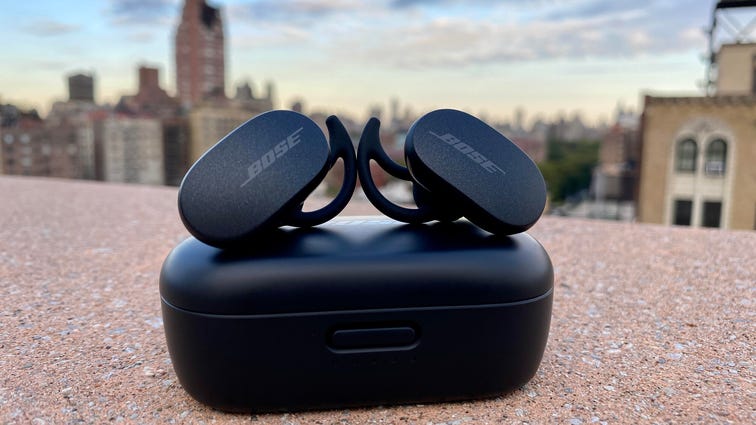

David Carnoy/CNET
In many ways, Bose’s $279 noise-canceling QuietComfort Earbuds are excellent true wireless earbuds, particularly when it comes to their sound and noise canceling, which is arguably the best out there right now in a set of earbuds. Performance-wise, they clearly have a leg up on Apple’s best-selling AirPods Pro true wireless noise-canceling buds. However, the AirPods Pro’s smaller design, somewhat more comfortable fit and superior voice-calling capabilities make it hard to declare the Bose the straight-up champ (they both are splash-proof, with IPX water-resistance). Ultimately, it depends on what your priorities are.

 \n ","topic":"","ttag":"","variant":"","viewguid":"","event":"listicle|image|8","correlationId":"","_destCat":"https:\/\/www.amazon.com\/beyerdynamic-Closed-Back-Headphones-Stellar-45-Monitoring\/dp\/B09G75RWN2","productName":"","formatType":"IMAGE","location":"LIST","position":8,"sku":"","dwLinkTag":"article-body|listicle|image","selector":"#article-body #listicle-a0e65004-19ab-402c-bf8c-b0244296b687 .itemImage"}}” rel=”noopener nofollow” target=”_blank”>
\n ","topic":"","ttag":"","variant":"","viewguid":"","event":"listicle|image|8","correlationId":"","_destCat":"https:\/\/www.amazon.com\/beyerdynamic-Closed-Back-Headphones-Stellar-45-Monitoring\/dp\/B09G75RWN2","productName":"","formatType":"IMAGE","location":"LIST","position":8,"sku":"","dwLinkTag":"article-body|listicle|image","selector":"#article-body #listicle-a0e65004-19ab-402c-bf8c-b0244296b687 .itemImage"}}” rel=”noopener nofollow” target=”_blank”>


David Carnoy/CNET
We were fans of Beyerdynamic’s earlier DT 770 Pro headphones. The new DT 700 X is easier to drive than the 770 Pro, thanks to the company’s new STELLAR.45 sound transducer with an impedance of 48 ohms, so it plays better with smartphones, tablets and laptops without requiring a headphone amp.
The headphone is targeted at content creators who want accurate audio reproduction, but it’s a bit more dynamic sounding and less bass shy than many studio headphones, which tend to restrain the bass and hew toward a very neutral sound profile. The DT 700 X is a revealing, clean-sounding headphone that offers invitingly open sound (particularly for a closed-back headphone) and makes you realize what you’re missing after listening to similarly priced Bluetooth headphones.
Unlike the earlier DT 770 Pro, which is being sold at a nice discount (around $160), the DT 700 X comes with two interchangeable (detachable) straight cables in different lengths, and the DT 700 X arguably has a little cleaner look than its predecessor.
The solidly built headphone — it weighs 350 grams — is quite comfortable, featuring upgraded soft, velour-covered memory foam earpads that offer decent passive noise isolation. The earpads and the headphones’ other parts are replaceable, Beyerdynamic says.
Beyerdynamic also sells the open-back DT 900 X for the same price. That model should provide slightly more open, airy sound but the big drawback is people around you can hear whatever you’re listening to — and sound also leaks in. This closed-back version is more versatile.
Best open earbuds
Apple AirPods 3rd Generation
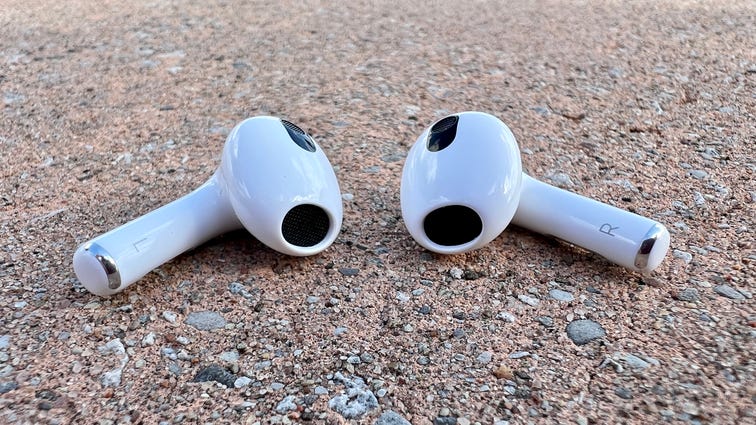

David Carnoy/CNET
Take one look at the new design of the third-gen AirPods ($179), and the first thing you’ll probably think is: “Those look like the AirPods Pro without ear tips.” You wouldn’t be wrong. While they’re more fraternal than identical twins, the AirPods 3 are shaped like the AirPods Pro, with the same shorter stems and same pinch controls as those of the Pro. Aside from the design change, which should fit most ears better than the AirPods 2nd Generation (though not very small ears), the biggest change is to the sound quality: It’s much improved. Also, battery life is better, and the AirPods 3 are officially water-resistant.

 \n ","topic":"Headphones","ttag":"amazon","variant":"","viewguid":"","event":"listicle|image|10","correlationId":"","assettitle":"","campaign":"amazon","cval":36,"leadCpc":0.36,"leadProdPrice":449.99,"manufacturer":"Apple","productName":"Apple AirPods Max (Silver)","seriesGuid":"0c50ef1d-b8c1-4ac3-8243-231c30148a7d","sku":"MGYJ3AM\/A","reviewId":"0e5f848d-4e43-4d7e-a8ef-e7038e8d84ff","formatType":"IMAGE","location":"LIST","position":10,"dwLinkTag":"article-body|listicle|image","selector":"#article-body #listicle-bb8f0d6c-f42a-4c07-b9ae-d5c7e0e7b5f2 .itemImage"}}” rel=”noopener nofollow” target=”_blank”>
\n ","topic":"Headphones","ttag":"amazon","variant":"","viewguid":"","event":"listicle|image|10","correlationId":"","assettitle":"","campaign":"amazon","cval":36,"leadCpc":0.36,"leadProdPrice":449.99,"manufacturer":"Apple","productName":"Apple AirPods Max (Silver)","seriesGuid":"0c50ef1d-b8c1-4ac3-8243-231c30148a7d","sku":"MGYJ3AM\/A","reviewId":"0e5f848d-4e43-4d7e-a8ef-e7038e8d84ff","formatType":"IMAGE","location":"LIST","position":10,"dwLinkTag":"article-body|listicle|image","selector":"#article-body #listicle-bb8f0d6c-f42a-4c07-b9ae-d5c7e0e7b5f2 .itemImage"}}” rel=”noopener nofollow” target=”_blank”>


David Carnoy/CNET
Yes, they’re expensive, but the AirPods Max deliver richer, more detailed sound than lower-priced competitors from Bose and Sony. They also feature arguably the best noise canceling on the market along with premium build quality and Apple’s virtual surround spatial audio feature for video watching. While they’re heavy, they manage to be surprisingly comfortable, though I did have to adjust the mesh canopy headband to sit a little more forward on my head to get a comfortable secure fit when I was out walking with them. They should fit most heads well, but there will be exceptions.

 \n ","topic":"","ttag":"","variant":"","viewguid":"","event":"listicle|image|11","correlationId":"","_destCat":"https:\/\/www.amazon.com\/Soundcore-Cancelling-Wireless-Multipoint-Connection\/dp\/B09CGM1BWH","productName":"","formatType":"IMAGE","location":"LIST","position":11,"sku":"","dwLinkTag":"article-body|listicle|image","selector":"#article-body #listicle-5f9dfa85-7474-461e-bece-26c6bdfdb752 .itemImage"}}” rel=”noopener nofollow” target=”_blank”>
\n ","topic":"","ttag":"","variant":"","viewguid":"","event":"listicle|image|11","correlationId":"","_destCat":"https:\/\/www.amazon.com\/Soundcore-Cancelling-Wireless-Multipoint-Connection\/dp\/B09CGM1BWH","productName":"","formatType":"IMAGE","location":"LIST","position":11,"sku":"","dwLinkTag":"article-body|listicle|image","selector":"#article-body #listicle-5f9dfa85-7474-461e-bece-26c6bdfdb752 .itemImage"}}” rel=”noopener nofollow” target=”_blank”>
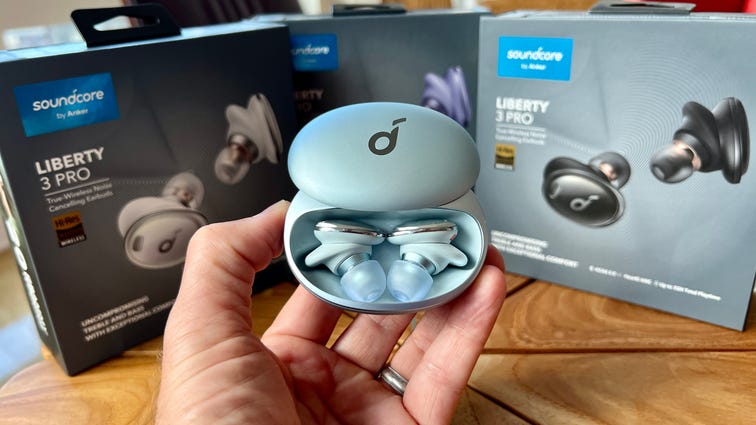

David Carnoy/CNET
Anker makes several earbuds that cost less than $100. But its Soundcore Liberty Pro is its “high-end” model that features premium sound, as well as support for Sony’s LDAC audio codec with compatible devices (mostly Android phones).
Available in four color options, the third-gen Liberty 3 Pro have updated dual drivers and are about 30% smaller than their predecessor. They fit my ears significantly better than the Liberty 2 Pro buds, which I didn’t love as much as some people. This new version is improved and a good value compared to other so-called premium buds.
The Liberty 3 Pro deliver a solid noise-canceling experience (they also have three different transparency modes) and feature Anker’s HearID ANC that “analyzes your ears and level of in-ear pressure to create a tailored profile that optimizes noise reduction and reduces external sound to suit your ears.”
The earbuds also perform well — though not exceptionally — as a headset for making calls. They’re IPX4 splash-proof and deliver up to 6 hours of battery life with noise canceling on and up to 8 hours with it off. The case charges wirelessly, and I liked how the tips of the buds are illuminated by a pair of LEDs on the inside of the case when the buds are charging.
Unlike with the Liberty Air 2 Pro, I had no problem getting a tight seal with the included ear tips, and I found the sound to be on par with other premium earbuds that cost more. They have big, open sound with lots of energy in the bass and good detail. While they have a list price of $170, they’re sporadically on sale for $20 less. If you’re not quite willing to step up to the Sony WF-1000XM4 or other high-end models, the Liberty 3 Pro are worth considering.

 \n ","topic":"Headphones","ttag":"direct","variant":"","viewguid":"","event":"listicle|image|12","correlationId":"","assettitle":"","campaign":"direct","cval":50,"leadCpc":0.5,"leadProdPrice":119.99,"manufacturer":"Samsung","productName":"Samsung Galaxy Buds 2","seriesGuid":"ee48dbba-b3db-4134-acf9-8cb733c42dd2","sku":"SM-R177NZKAXAR","reviewId":"b96a34b5-995e-4c0e-bf9e-f7f9e73c2f0d","formatType":"IMAGE","location":"LIST","position":12,"dwLinkTag":"article-body|listicle|image","selector":"#article-body #listicle-403978ca-c643-49a1-9b0a-ec24d9fee5df .itemImage"}}” rel=”noopener nofollow” target=”_blank”>
\n ","topic":"Headphones","ttag":"direct","variant":"","viewguid":"","event":"listicle|image|12","correlationId":"","assettitle":"","campaign":"direct","cval":50,"leadCpc":0.5,"leadProdPrice":119.99,"manufacturer":"Samsung","productName":"Samsung Galaxy Buds 2","seriesGuid":"ee48dbba-b3db-4134-acf9-8cb733c42dd2","sku":"SM-R177NZKAXAR","reviewId":"b96a34b5-995e-4c0e-bf9e-f7f9e73c2f0d","formatType":"IMAGE","location":"LIST","position":12,"dwLinkTag":"article-body|listicle|image","selector":"#article-body #listicle-403978ca-c643-49a1-9b0a-ec24d9fee5df .itemImage"}}” rel=”noopener nofollow” target=”_blank”>


David Carnoy/CNET
Available in four color options, the Samsung Galaxy Buds 2 noise-canceling headphones hew more closely to the newer Galaxy Buds Pro and Galaxy Buds Live, both of which have eye-catching glossy curved designs and the same compact charging case as this new model. In fact, it’s the Buds 2’s design and fit — they’re 15% smaller and 20% lighter than the Buds Plus — that make them a potentially more likable alternative to the slightly better-sounding Buds Pro.
Like the Buds Pro, the Buds 2 are equipped with active noise-isolating earbuds. That means all the latest Galaxy Buds models now feature some form of active noise canceling, though it’s slight with the Buds Live, which have an open design sans ear tips. While the Buds 2 look more like shrunken versions of the Buds Pro, I found them more akin to the Buds Live in that they barely stick out of your ears and are fairly discreet. Because they sit more flush with your ears — and have that curved design — they also pick up less wind noise. They’re IPX2 sweat-resistant. Read our Galaxy Buds 2 review.

 \n ","topic":"Headphones","ttag":"CRUTCHFIELDCATRT","variant":"","viewguid":"","event":"listicle|image|13","correlationId":"","assettitle":"","campaign":"CRUTCHFIELDCATRT","cval":50,"leadCpc":0.5,"leadProdPrice":199.95,"manufacturer":"Sennheiser","productName":"Sennheiser Momentum True Wireless 2 (Black)","seriesGuid":"b6cbf9b7-d403-44b8-b834-62eb984f5014","sku":"SEM3IETW2B-REG","reviewId":"0bfd2ee5-ee54-45b2-ae1b-8ddf0ec595ab","formatType":"IMAGE","location":"LIST","position":13,"dwLinkTag":"article-body|listicle|image","selector":"#article-body #listicle-b17f70a7-666f-453a-871e-d5579c2bad98 .itemImage"}}” rel=”noopener nofollow” target=”_blank”>
\n ","topic":"Headphones","ttag":"CRUTCHFIELDCATRT","variant":"","viewguid":"","event":"listicle|image|13","correlationId":"","assettitle":"","campaign":"CRUTCHFIELDCATRT","cval":50,"leadCpc":0.5,"leadProdPrice":199.95,"manufacturer":"Sennheiser","productName":"Sennheiser Momentum True Wireless 2 (Black)","seriesGuid":"b6cbf9b7-d403-44b8-b834-62eb984f5014","sku":"SEM3IETW2B-REG","reviewId":"0bfd2ee5-ee54-45b2-ae1b-8ddf0ec595ab","formatType":"IMAGE","location":"LIST","position":13,"dwLinkTag":"article-body|listicle|image","selector":"#article-body #listicle-b17f70a7-666f-453a-871e-d5579c2bad98 .itemImage"}}” rel=”noopener nofollow” target=”_blank”>
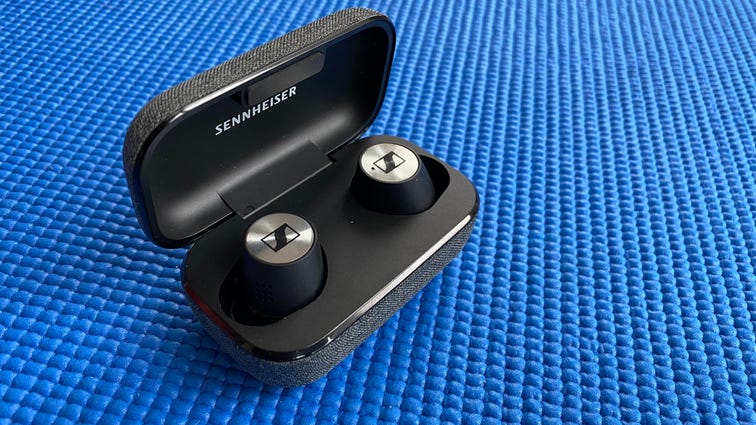

David Carnoy/CNET
The second-generation Sennheiser Momentum True Wireless 2 aren’t cheap. These true wireless earphones are better all around than the originals, with a slightly smaller, more comfortable earbud design, great audio quality, active noise canceling that rivals that of the AirPod Pro, improved battery life (up to seven hours versus the original’s four) and better noise reduction during calls. If you don’t like these ANC earbuds in black, a white version is available. Most importantly, though, the Momentum True Wireless 2 have the same great sound — for true wireless earbuds, anyway — offering clearly superior sound quality to the AirPods Pro.
They use Bluetooth 5.1 with support for the AAC and aptX codecs, for devices that support aptX.

 \n ","topic":"","ttag":"","variant":"","viewguid":"","event":"listicle|image|14","correlationId":"","_destCat":"https:\/\/www.amazon.com\/dp\/B091G6N36N","productName":"","formatType":"IMAGE","location":"LIST","position":14,"sku":"","dwLinkTag":"article-body|listicle|image","selector":"#article-body #listicle-e1fd778b-e056-42c3-95a3-9b0b5f40a78a .itemImage"}}” rel=”noopener nofollow” target=”_blank”>
\n ","topic":"","ttag":"","variant":"","viewguid":"","event":"listicle|image|14","correlationId":"","_destCat":"https:\/\/www.amazon.com\/dp\/B091G6N36N","productName":"","formatType":"IMAGE","location":"LIST","position":14,"sku":"","dwLinkTag":"article-body|listicle|image","selector":"#article-body #listicle-e1fd778b-e056-42c3-95a3-9b0b5f40a78a .itemImage"}}” rel=”noopener nofollow” target=”_blank”>
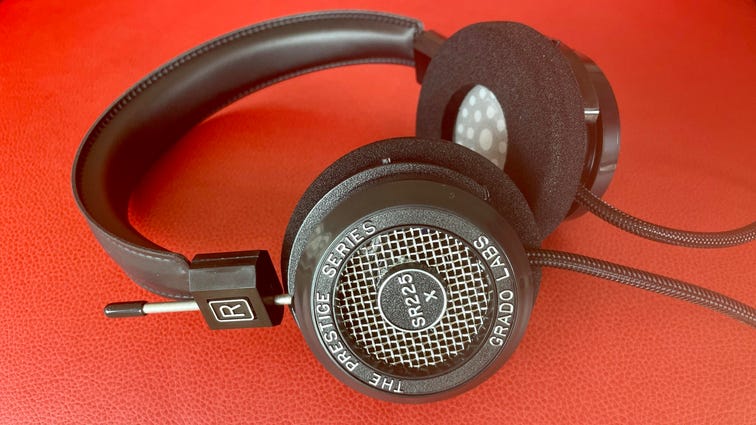

David Carnoy/CNET
Grado has upgraded its entry-level line of Prestige Series wired headphones for 2021. Hand-built, the line includes the SR60x, SR80x, SR125x, SR225x and SR325x, and they’re all very good at their various prices. Arguably, however, the $225 SR225x hits the sweet spot if you’re looking for open-back audiophile-grade headphones that won’t cost you an arm and a leg.
This updated model features a more durable eight-conductor cable infused with “super annealed” copper for “improved purity of the audio signal,” a more comfortable headband design and updated fourth-generation 44mm drivers that further cut down on distortion and are also more energy-efficient, making them easier to drive. I not only used them with an external headphone amplifier attached to my computer but with an iPhone using a Lightning-to-3.5mm adapter. They had plenty of volume when connected directly to the iPhone.
Open-back headphones are supposed to produce more open sound and these do just that with powerful, controlled bass and natural, warm-sounding mids (where vocals live) along with excellent overall clarity. Stepping up to the SRS325x should give you a little bit more bass energy, but you’re not looking at a big jump in sound quality. As with any open-back headphones, these do leak some sound, so people around you can hear what you’re listening to.
These headphones have semisoft foam earpads that, when you first put them on, you wouldn’t think are that comfortable over longer listening sessions. But they end up being more comfortable than you’d expect and the new headband design does help in that department. For entry-level audiophile-grade headphones that cost less than $250, it’s hard to do better than the SR225x.

 \n ","topic":"","ttag":"","variant":"","viewguid":"","event":"listicle|image|15","correlationId":"","_destCat":"https:\/\/www.amazon.com\/Edifier-330NB-True-Wireless-Earbuds\/dp\/B093SNBG2Y","productName":"","formatType":"IMAGE","location":"LIST","position":15,"sku":"","dwLinkTag":"article-body|listicle|image","selector":"#article-body #listicle-ea216b20-0128-490c-9027-928e656ca421 .itemImage"}}” rel=”noopener nofollow” target=”_blank”>
\n ","topic":"","ttag":"","variant":"","viewguid":"","event":"listicle|image|15","correlationId":"","_destCat":"https:\/\/www.amazon.com\/Edifier-330NB-True-Wireless-Earbuds\/dp\/B093SNBG2Y","productName":"","formatType":"IMAGE","location":"LIST","position":15,"sku":"","dwLinkTag":"article-body|listicle|image","selector":"#article-body #listicle-ea216b20-0128-490c-9027-928e656ca421 .itemImage"}}” rel=”noopener nofollow” target=”_blank”>
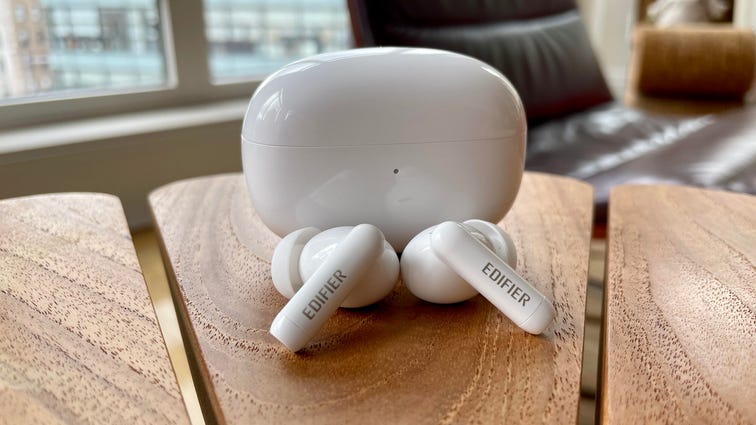

David Carnoy/CNET
Edifier has a few different new true-wireless earbuds and most, including the TWS 330NB, are good values. While the TWS 330NB buds are missing a sensor that automatically pauses your music when you take them out of your ears, they feature excellent sound quality for the money, decent active noise canceling with a transparency mode, and solid voice calling (they have three microphones in each bud for noise canceling and noise reduction during calls).
They fit my ears well — they’re essentially AirPods Pro clones — and while the touch controls are a little limited, they are programmable using the Edifier Connect app for iOS and Android (you can also set the level of touch sensitivity). They have an IP54 rating, which means they’re splash- and dust-proof, and battery life is rated at four hours with noise canceling on and five hours with it off (at moderate volume levels). That’s only OK, but you do get an additional two charges in the charging case.
Note that sometimes there’s an instant discount coupon on Amazon’s product page that reduces the price of these.

 \n ","topic":"Headphones","ttag":"direct","variant":"","viewguid":"","event":"listicle|image|16","correlationId":"","assettitle":"","campaign":"direct","cval":61,"leadCpc":0.61,"leadProdPrice":449,"manufacturer":"Bose","productName":"Bose Noise Cancelling Headphones 700 (Black)","seriesGuid":"92c0e1bd-872a-4616-9a5f-41623274a528","sku":"794297-0100","reviewId":"3c65a95b-d246-4880-96f0-6e537e6b9505","formatType":"IMAGE","location":"LIST","position":16,"dwLinkTag":"article-body|listicle|image","selector":"#article-body #listicle-54991a56-a912-4cdd-87e5-d9bb85d8ad31 .itemImage"}}” rel=”noopener nofollow” target=”_blank”>
\n ","topic":"Headphones","ttag":"direct","variant":"","viewguid":"","event":"listicle|image|16","correlationId":"","assettitle":"","campaign":"direct","cval":61,"leadCpc":0.61,"leadProdPrice":449,"manufacturer":"Bose","productName":"Bose Noise Cancelling Headphones 700 (Black)","seriesGuid":"92c0e1bd-872a-4616-9a5f-41623274a528","sku":"794297-0100","reviewId":"3c65a95b-d246-4880-96f0-6e537e6b9505","formatType":"IMAGE","location":"LIST","position":16,"dwLinkTag":"article-body|listicle|image","selector":"#article-body #listicle-54991a56-a912-4cdd-87e5-d9bb85d8ad31 .itemImage"}}” rel=”noopener nofollow” target=”_blank”>
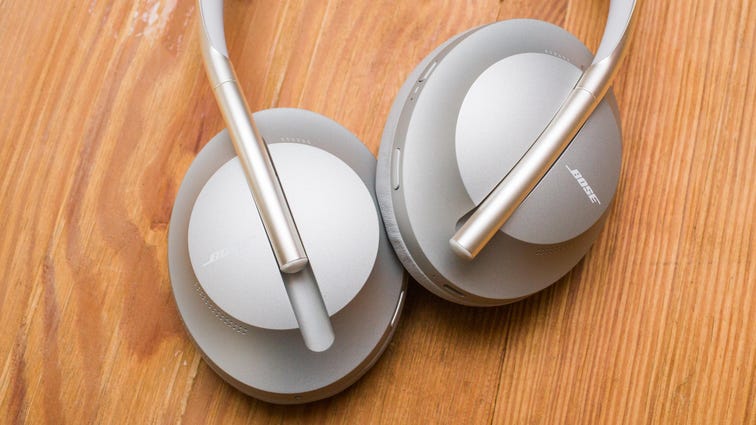

Sarah Tew/CNET
The Bose Noise Cancelling Headphones 700, the long-awaited successor to Bose’s QuietComfort 35 II model, may not be a quantum leap forward, but these headphones offer slightly better sound and noise cancellation along with top-notch headset performance for voice calls. They’re a strong all-around audio performer (some prefer their sound to that of Sony’s WH-1000XM4) with up to 20 hours of battery life and a more durable design than their predecessor, although the QuietComfort 35 II headphones may be slightly more comfortable.
At launch, they cost $400, but they’ve come down in price. We’ve seen the white version dip as low as $299 while the black and silver versions have hit $340. That said, Sony’s WH-1000XM4, their closest competitor, has also seen nice discounts.

 \n ","topic":"","ttag":"","variant":"","viewguid":"","event":"listicle|image|17","correlationId":"","_destCat":"https:\/\/www.amazon.com\/dp\/B08HMWZBXC\/","productName":"","formatType":"IMAGE","location":"LIST","position":17,"sku":"","dwLinkTag":"article-body|listicle|image","selector":"#article-body #listicle-e1478773-5fae-4bb3-862d-89756e319c1c .itemImage"}}” rel=”noopener nofollow” target=”_blank”>
\n ","topic":"","ttag":"","variant":"","viewguid":"","event":"listicle|image|17","correlationId":"","_destCat":"https:\/\/www.amazon.com\/dp\/B08HMWZBXC\/","productName":"","formatType":"IMAGE","location":"LIST","position":17,"sku":"","dwLinkTag":"article-body|listicle|image","selector":"#article-body #listicle-e1478773-5fae-4bb3-862d-89756e319c1c .itemImage"}}” rel=”noopener nofollow” target=”_blank”>
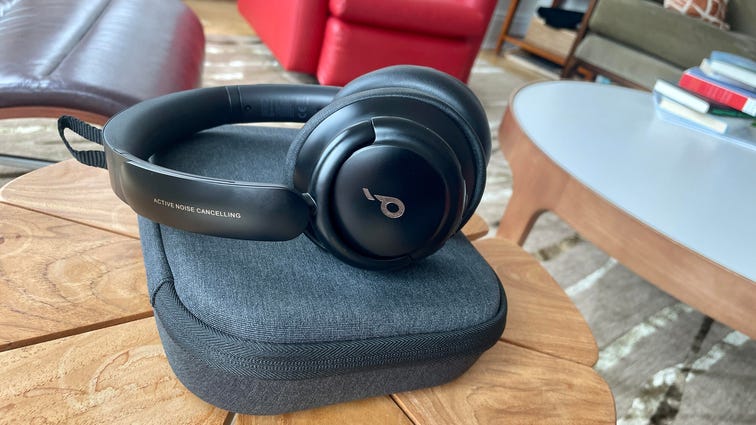

Sarah Tew/CNET
As far as sound, comfort level and build quality, you’d be hard-pressed to do better than Anker’s Soundcore Life Q30 for the money. It doesn’t quite have the clarity or bass definition as some of the top premium models, but it’s less than a third of the price and gets you about 75% of the way there in terms of sound (it’s well balanced overall with punchy bass and there’s an app that allows you to tweak the sound). Noise canceling is good for the price, though not up to the level of the Sony WH-1000XM4 or Bose Noise Cancelling Headphones 700. Battery life is rated at an impressive 40 hours with USB-C charging.
The only area where the Q30 falls a little short is for voice calls. It picks up your voice fine in quieter environments, but it just doesn’t reduce background noise all that well.
Compared to the Q20 (see below), the Q30 does offer improved sound (it’s not a huge difference, but it definitely is a notch up) and a more premium design. It’s currently listed at $80 on Amazon, but you can bring the price down to $60 with a $20 coupon at checkout.

 \n ","topic":"","ttag":"","variant":"","viewguid":"","event":"listicle|image|18","correlationId":"","_destCat":"https:\/\/www.amazon.com\/dp\/B08LYXGB89\/","productName":"","formatType":"IMAGE","location":"LIST","position":18,"sku":"","dwLinkTag":"article-body|listicle|image","selector":"#article-body #listicle-e2f09c82-5bfd-40f6-94da-6959937b020c .itemImage"}}” rel=”noopener nofollow” target=”_blank”>
\n ","topic":"","ttag":"","variant":"","viewguid":"","event":"listicle|image|18","correlationId":"","_destCat":"https:\/\/www.amazon.com\/dp\/B08LYXGB89\/","productName":"","formatType":"IMAGE","location":"LIST","position":18,"sku":"","dwLinkTag":"article-body|listicle|image","selector":"#article-body #listicle-e2f09c82-5bfd-40f6-94da-6959937b020c .itemImage"}}” rel=”noopener nofollow” target=”_blank”>
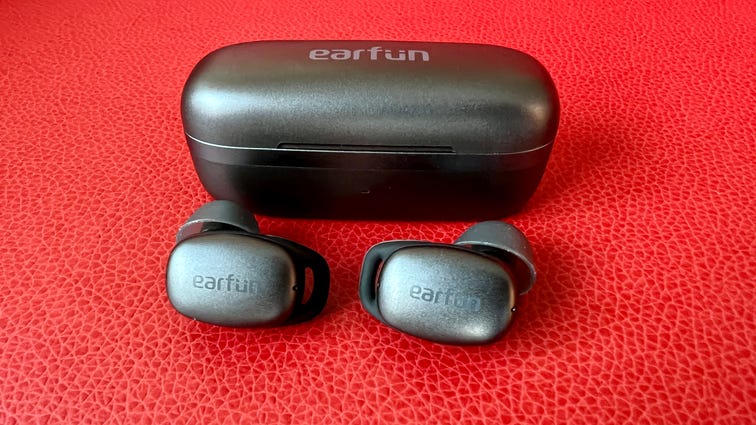

David Carnoy/CNET
I was a fan of Earfun’s earlier Free Pro earbuds, which offer good sound for around $50 and have little sport fins that help keep them in your ears securely. Now Earfun has released the Earfun Pro 2 buds with aluminum alloy caps, improved noise canceling and a couple of extra microphones that help boost voice-calling performance.
The Free Pro 2 deliver good sound for their modest price, with decent clarity and deep but well-defined bass. They produce relatively big, open sound. They don’t have such extra features as an ear-detection sensor so your music automatically pauses when you take one or both buds out of your ears or an app that allows you to update their firmware. But they’re lightweight, should fit most ears well and have decent noise canceling along with a transparency mode (it’s not as good as the AirPods Pro’s transparency mode, which is hard to beat).
I found the voice-calling performance good but not great. They did an acceptable job reducing background noise and picking up my voice in noisy environments but they aren’t necessarily top-notch in this department. Battery life is rated at up to 6 hours, they’re IPX5 splash-proof, and their elongated case (it charges wirelessly) is compact and lightweight. It’s better designed than the Free Pro’s case.

 \n ","topic":"Headphones","ttag":"direct","variant":"","viewguid":"","event":"listicle|image|19","correlationId":"","assettitle":"","campaign":"direct","cval":50,"leadCpc":0.5,"leadProdPrice":99.99,"manufacturer":"Samsung","productName":"Samsung Galaxy Buds Live (Black)","seriesGuid":"7e20ef75-5840-4db9-8969-b638a790631d","sku":"SM-R180NZKAXAR","reviewId":"fa14d970-c66e-4798-90ba-3fcad1f94f25","formatType":"IMAGE","location":"LIST","position":19,"dwLinkTag":"article-body|listicle|image","selector":"#article-body #listicle-d07b580b-3546-44b2-9a09-1f5f3529a00b .itemImage"}}” rel=”noopener nofollow” target=”_blank”>
\n ","topic":"Headphones","ttag":"direct","variant":"","viewguid":"","event":"listicle|image|19","correlationId":"","assettitle":"","campaign":"direct","cval":50,"leadCpc":0.5,"leadProdPrice":99.99,"manufacturer":"Samsung","productName":"Samsung Galaxy Buds Live (Black)","seriesGuid":"7e20ef75-5840-4db9-8969-b638a790631d","sku":"SM-R180NZKAXAR","reviewId":"fa14d970-c66e-4798-90ba-3fcad1f94f25","formatType":"IMAGE","location":"LIST","position":19,"dwLinkTag":"article-body|listicle|image","selector":"#article-body #listicle-d07b580b-3546-44b2-9a09-1f5f3529a00b .itemImage"}}” rel=”noopener nofollow” target=”_blank”>
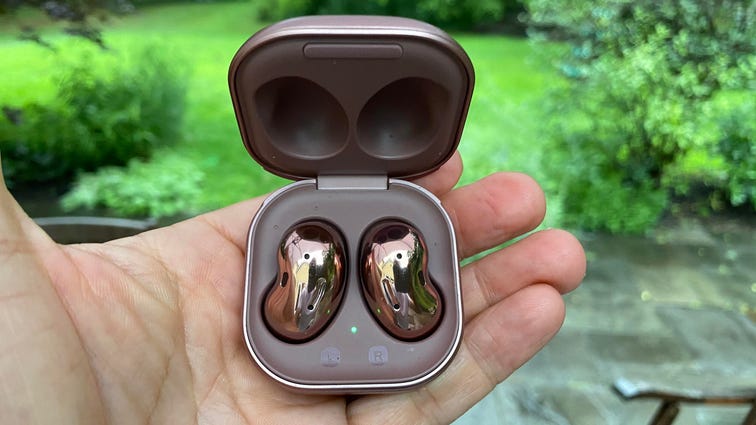

David Carnoy/CNET
Say what you will about the Samsung Galaxy Buds Live’s bean-shaped design, but they might just be the most innovative new true wireless earbuds. Like the standard AirPods, they have an open design — you don’t jam an ear tip into your ear — and they’re quite comfortable to wear and fit my ears more securely than the AirPods. That said, they won’t fit everybody’s ears equally well. These wireless buds are discreet and basically sit flush with your ear without a little white pipe extending out from them.
They deliver good sound and work well as a headset for making calls, with good background noise reduction so callers can hear you clearly even when you’re in noisier environments. While they feature active noise canceling, it’s mild compared to the noise canceling in earbuds that have a noise-isolating design. In other words, buy them for their design and sound, not their noise-canceling features.

 \n ","topic":"","ttag":"","variant":"","viewguid":"","event":"listicle|image|20","correlationId":"","_destCat":"https:\/\/www.amazon.com\/dp\/B07YXBPGG7","productName":"","formatType":"IMAGE","location":"LIST","position":20,"sku":"","dwLinkTag":"article-body|listicle|image","selector":"#article-body #listicle-ba20a582-af79-4f1e-8e0c-08fd8dd1d4f9 .itemImage"}}” rel=”noopener nofollow” target=”_blank”>
\n ","topic":"","ttag":"","variant":"","viewguid":"","event":"listicle|image|20","correlationId":"","_destCat":"https:\/\/www.amazon.com\/dp\/B07YXBPGG7","productName":"","formatType":"IMAGE","location":"LIST","position":20,"sku":"","dwLinkTag":"article-body|listicle|image","selector":"#article-body #listicle-ba20a582-af79-4f1e-8e0c-08fd8dd1d4f9 .itemImage"}}” rel=”noopener nofollow” target=”_blank”>


Sarah Tew/CNET
V-Moda’s M-200 are currently only one of two wired headphones on this list. Released in late 2019, these clean and detailed sounding over-ear headphones have excellent bass response, and the cushy ear cushion cups mean they’re also comfortable to wear. Featuring 50mm drivers with neodymium magnets, CCAW voice coils and fine-tuning by Roland engineers — yes, V-Moda is now owned by Roland — the M‑200 is Hi‑Res Audio certified by the Japan Audio Society. Other V-Moda headphones tend to push the bass a little, but this set has the more neutral profile that you’d expect from studio monitor headphones. It comes with two cords, one of which has a built-in microphone for making calls. It would be nice if V-Moda offered Lightning or USB-C cables for phones without headphone jacks.
Note that in 2021, V-Moda has released the M-200 ANC ($500), a wireless version of these headphones that includes active noise canceling. It also sounds great but its noise canceling, call quality and overall feature set don’t match those of the AirPods Max.



